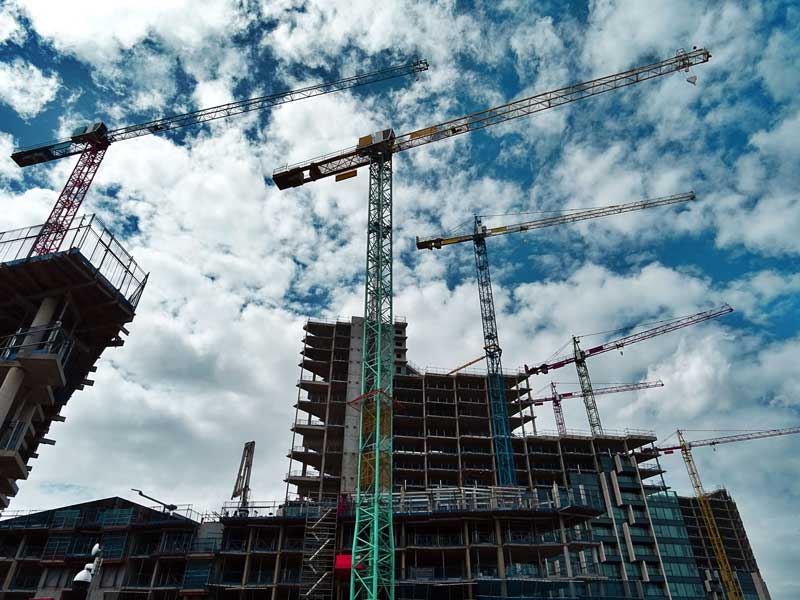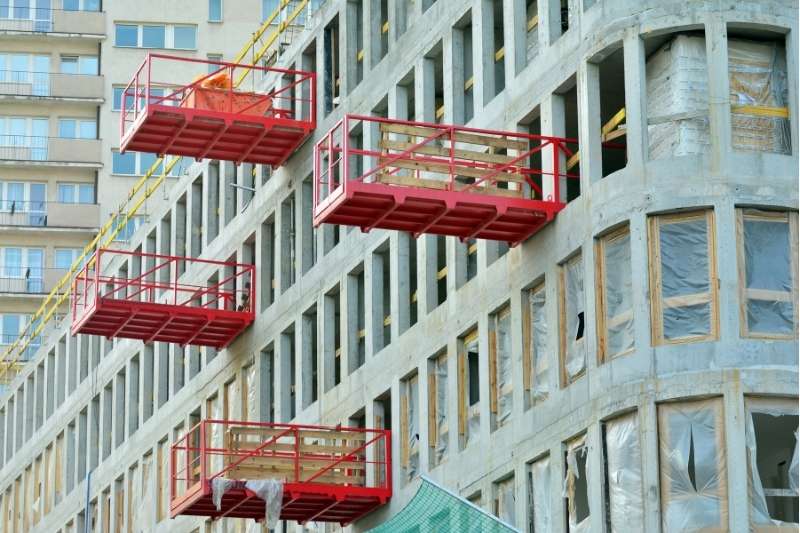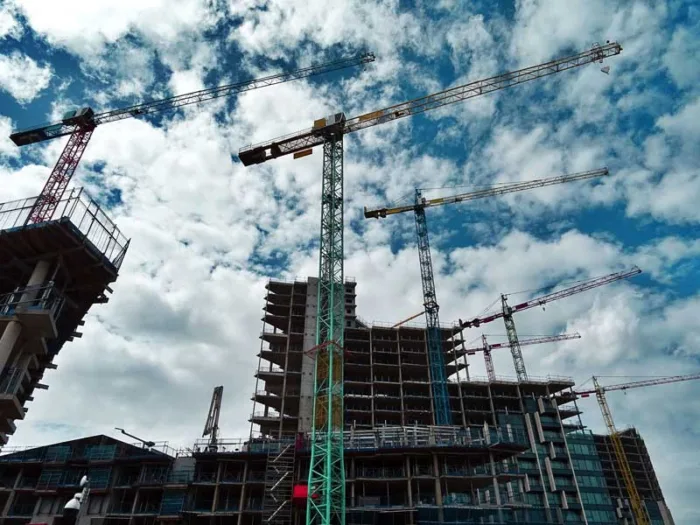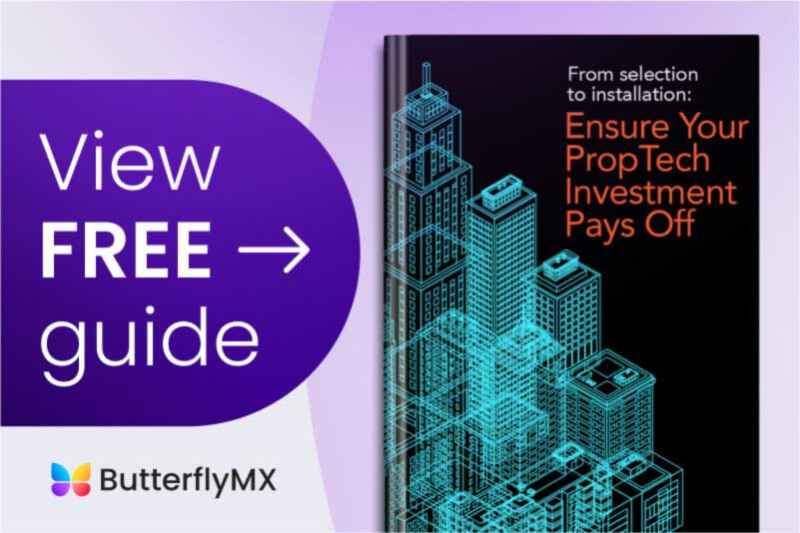Key takeaways
- Choosing user-friendly proptech increases adoption among residents and staff, helping you get the most out of your investment.
- Always check that your building’s infrastructure can support new technology to avoid costly installation issues.
- Invest in systems that are compatible with future technologies like 5G and WiFi 6 to stay ahead of the curve.
- Work with reputable proptech providers and installers to ensure successful implementation and long-term reliability.

Whether you’re a developer or a property manager, you’re ready to take advantage of the benefits property technology can offer you. But if you’re planning to invest in proptech solutions such as a building entry system, you’ll need to do your homework to find the right solution for your needs.
Proptech has saved time and money for millions of developers and property managers worldwide. But you know that adding anything to your building always has certain considerations.
Failing to consider your budget, your building’s infrastructure, and future developments can lead to a poor return on your investment. So, here are four key pitfalls of proptech to avoid when investing in a new solution.
The four most common proptech pitfalls are:
- Choosing a proptech solution that isn’t user friendly
- Investing in proptech that your building’s existing wiring can’t support
- Forgetting to keep an eye on the future
- Failing to properly assess your installer and proptech provider
1. Choosing a proptech solution that isn’t user friendly
A thoughtfully designed, user-focused solution with a simple registration process will increase resident adoption. If it takes too long to learn, residents (and staff) will be less likely to use it, and your investment could be largely wasted.
Ask your provider for buildings in your area where their product is installed, and check it out yourself. Property staff and residents who love a proptech product will tell you — and they’ll surely tell you if they don’t. It’s a win-win.
2. Investing in proptech that your building’s existing wiring can’t support
One of the biggest — and most common — mistakes is investing in proptech that your building’s current wiring cannot support. If you’re retrofitting an existing building, check your system’s requirements and confirm that your wiring can support the necessary data bandwidth.
For new developments, consider fiber optic cables. Fiber optics may seem expensive compared to other options, but they carry higher data loads with less energy consumption. With more internet-connected devices going online every day, you’ll be thankful you made the investment.
Without the low-voltage wiring to support the necessary data transfer, your proptech investment probably won’t perform as intended. Moreover, improving internet connectivity can help building owners increase rent and revenue.
3. Forgetting to keep an eye on the future
With 5G and WiFi 6 right around the corner, you may not need to upgrade your building’s wiring. Instead, installing repeaters within your property may be enough to boost the signal and achieve your desired results.
Remember that adding any amenity improves tenant satisfaction, operational efficiency, or both to positively impact NOI. However, if the upfront or ongoing investment is too large, investing in otherwise desirable proptech amenities for residents.
4. Assessing your installer and proptech provider
Proptech is a relatively new field, and many traditional installers and integrators are still catching up. And there’s nothing worse than committing to a proptech investment only for it to go south because of an inexperienced installer.
The wrong installer can:
- Damage the hardware
- Overcomplicate the installation, resulting in unnecessary costs
- Charge for unnecessary services
- Miss deadlines
Now that you know an inefficient installer is one of the most common pitfalls of proptech let’s lay out some strategies that will help you determine if a certain installer is right for you.
5 questions to ask your proptech installer & provider:
- How long does the installation process usually take?
- How many people are typically involved in the installation process?
- Can your building’s infrastructure support new technologies?
- How many wiring touchpoints or connections are required for the system?
- What are the ongoing maintenance costs?
1. How long does the installation process usually take?
Regardless of your budget, the right proptech must meet your deadlines. New developments have strict timetables that must be followed, and retrofits can quickly become installation nightmares. So, develop new properties with your desired technology to save days or weeks of unforeseen changes.
Ask your proptech provider for references, particularly for buildings of similar size, location, or date of construction. This way, you can understand how long the installation will take and how much it will cost.
Your property is a multi-million dollar asset. So don’t let one of the most common pitfalls of proptech stop that asset from producing returns because of missed deadlines or Certificate of Occupancy delays.
2. How many people are typically involved in the installation process?
Answer: one.
The best proptech solutions are designed so that one person can install them on top of existing building infrastructure or with few modifications.
3. Can your building’s infrastructure support new technologies?
Many new property technologies require either additional power, bandwidth, or both. Before purchasing new real estate technology, ensure your current infrastructure can support it. Please familiarize yourself with the system’s wiring diagram and confirm its compatibility with your building.

4. How many wiring touchpoints or connections are required for the system?
Let’s use property access technology as an example. Soon, you’ll be able to easily install access points at each door you want to control. These access points will run on battery power and connect wirelessly to your building’s internet, sending a signal to smart locks to open doors. But until then, you’ll have to do some planning because adding these access points can be time-consuming and expensive.
Once you’ve determined which doors need to be locked, you’ll need to consider your system hardware’s wiring requirements: Can it be powered over Ethernet (PoE) or requires a dedicated power source? Is this power source AC or DC? This can make the difference between building inspectors coming to visit or not.
5. What are the ongoing maintenance costs?
After purchase, your system will need additional maintenance. Some proptech solutions have high maintenance costs, some have low maintenance costs, and some have none (well, sort of).
High maintenance costs are common with providers that sell several pieces of hardware. In the same way, your smartphone becomes obsolete as software requirements change, proptech hardware gets old, too. It can also cost a lot to update your systems if someone needs to enter the premises.
Low-maintenance providers typically sell little to no hardware and remotely transmit software updates to improve functionality and security. You might have to pay a small fee to a low-maintenance provider, but remote software updates ensure that your systems are always up to date without any of the hassles of an in-person installer.
But what about providers that claim no maintenance costs? Unfortunately, you’ll pay for that in the form of hardware and software that quickly becomes obsolete. Technology changes fast, and if you purchase solutions that don’t adapt, you’ll have to make regular investments to stay current.






